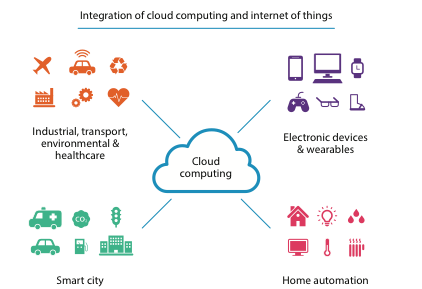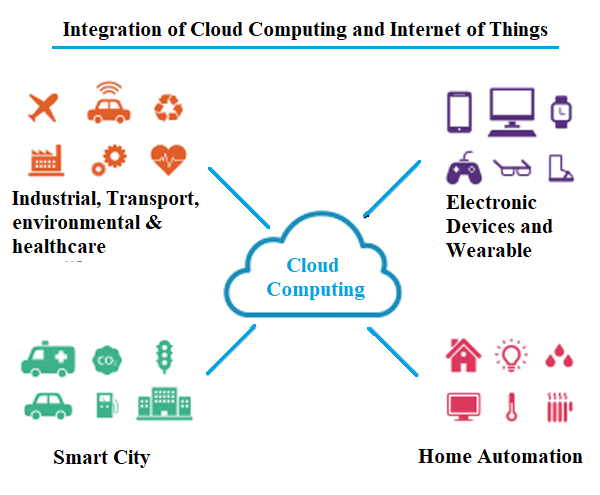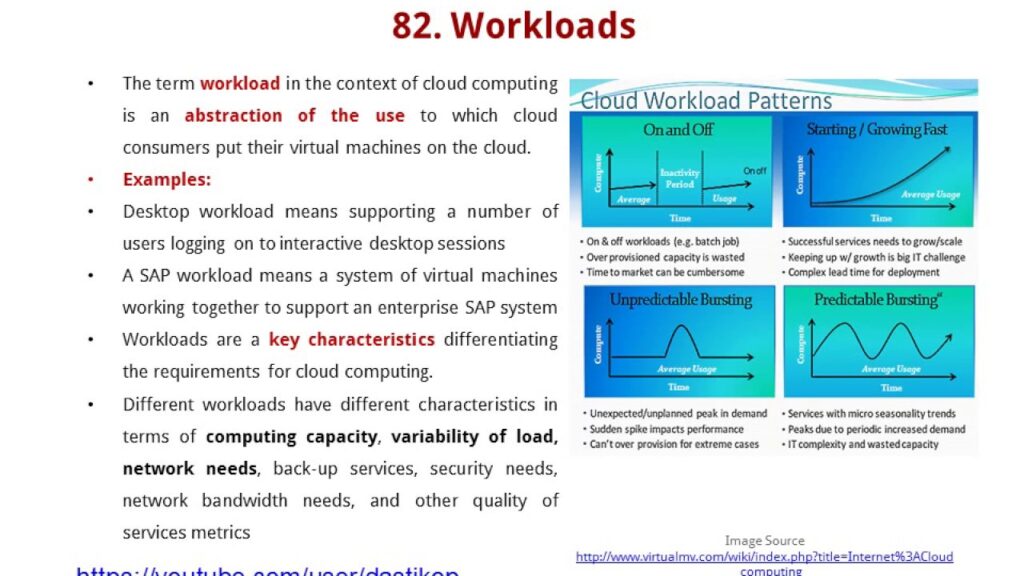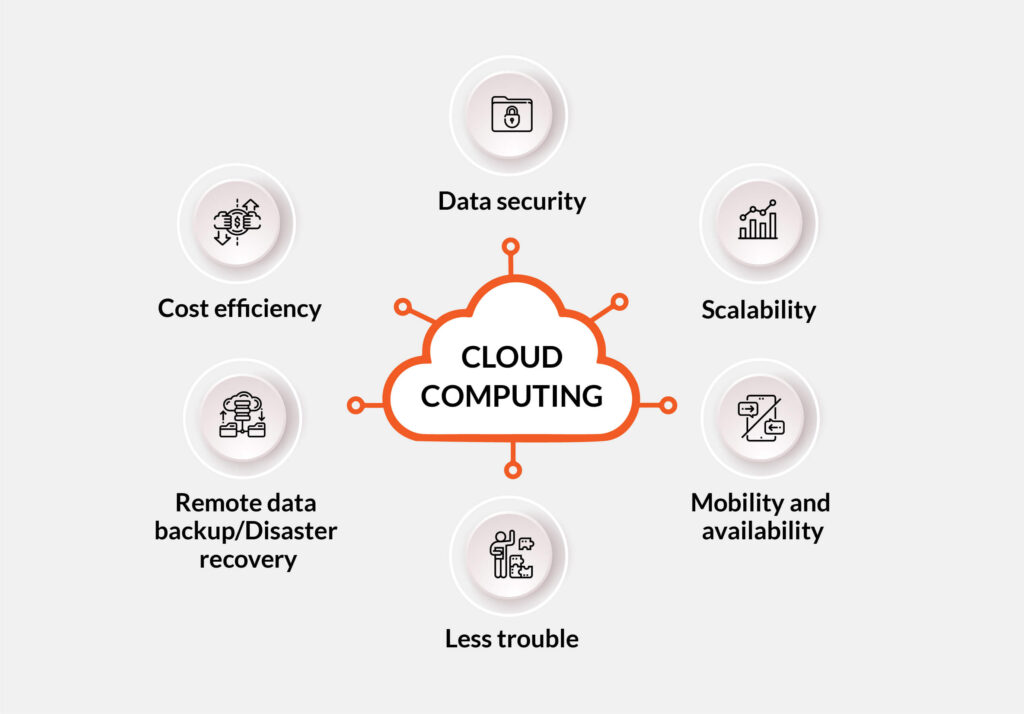The world is witnessing a rapid increase in the adoption of Internet of Things (IoT) devices. These devices have now become an integral part of our daily lives, from smart homes to intelligent transportation systems. However, as the number of IoT devices continues to grow, so does the amount of data these devices generate. This data needs to be stored, processed, and analyzed in real-time. This is where cloud computing comes in, as it offers a scalable and cost-effective solution for managing IoT data.
Cloud computing provides an infrastructure that enables IoT devices to connect, communicate, and share data. It offers a platform where IoT devices can store and process data without the need for on-premises hardware. This eliminates the need for large capital investments in infrastructure, as cloud computing provides a pay-as-you-go model. Additionally, cloud computing allows for the quick and easy deployment of IoT solutions, and provides the flexibility to scale up or down as needed. With the help of cloud computing, IoT devices can leverage the power of data analytics, machine learning, and artificial intelligence to provide intelligent insights and make real-time decisions.
Cloud computing helps IoT devices automate their processes and improve efficiency. Data is stored and managed in the cloud, enabling real-time access and analysis of data. Cloud computing also makes it possible to store and process large volumes of data, allowing IoT devices to track and analyze more data points. Additionally, cloud computing makes it easier to scale IoT applications, so businesses can quickly and easily expand their services.

How Does Cloud Computing Help IoT Devices?
The Internet of Things (IoT) is a network of physical devices that are connected to the Internet and can collect, exchange, and analyze data. Cloud computing is a technology that enables companies to store, manage, and process data on remote servers. These two technologies are becoming increasingly intertwined as companies look to leverage the power of the cloud to improve the performance of their IoT devices.
IoT Device Data Storage
One of the main benefits of cloud computing for IoT devices is the ability to store large amounts of data. IoT devices generate massive amounts of data, which can be difficult to store on local servers or devices. By storing this data in the cloud, companies can access it more quickly and easily, and make use of analytics tools to gain insight into the data. Additionally, cloud storage is more secure than traditional storage methods, as the data is encrypted and can be backed up in multiple locations.
Another advantage of cloud-based storage is scalability. As the amount of data generated by IoT devices grows, companies can easily increase their storage capacity by adding more cloud-based storage. This allows companies to store vast amounts of data, while avoiding the costs associated with purchasing and maintaining physical storage.
Data Processing
Cloud computing also offers advantages when it comes to processing data generated by IoT devices. Many IoT devices generate data in real-time, and the cloud can quickly process this data and provide insights or trigger automated actions. This allows companies to get the most out of their IoT devices, as the data can be used to make informed decisions or take immediate action.
The cloud also offers a number of other advantages for data processing, including the ability to access and use powerful computing resources such as artificial intelligence and machine learning. Additionally, cloud-based analysis can be done in parallel, which means multiple tasks can be completed simultaneously, drastically reducing the time it takes to process data.
Connectivity and Security
Cloud computing also provides a secure connection between IoT devices and the Internet. This allows companies to access data from their IoT devices remotely, and manage and control them from any location. Additionally, the cloud provides a secure platform for data transmission, ensuring that all data is protected from unauthorized access.
The cloud also provides improved security for IoT devices, as it allows companies to quickly deploy and update security measures to keep their data safe. This is especially important as the number of IoT devices increases, as companies need to be able to respond quickly to potential security threats in order to keep their data safe.
Cost Savings
Finally, cloud computing can help companies save money by reducing the costs associated with managing and maintaining physical servers. Additionally, companies can take advantage of the scalability of cloud computing, allowing them to quickly add more storage or processing power as needed, without having to invest in additional hardware.
Cloud computing can also reduce operational costs, as companies can shift the costs associated with managing and maintaining physical servers to the cloud provider. This can result in significant cost savings, as companies no longer need to invest in the hardware or personnel required to manage and maintain physical servers.
Frequently Asked Questions
Cloud computing is a technology that helps interconnected devices, such as the Internet of Things (IoT), to store, share, and process data more efficiently. In this article, we’ll look at how cloud computing can help IoT devices.
How Does Cloud Computing Help IoT Devices?
Cloud computing helps IoT devices by providing them with access to powerful computing resources that would otherwise be too costly or difficult to provide on their own. By storing data in the cloud, IoT devices can access data and applications from anywhere in the world, allowing them to make real-time decisions and take actions based on that data. Additionally, cloud computing reduces the need for manual maintenance and updates, as software updates and patches can be pushed out automatically to all connected devices.
Cloud computing also makes it easier for IoT devices to share data with each other, as well as with other systems. This allows for greater collaboration and more efficient decision-making, as data from multiple sources can be easily combined and analyzed. Finally, cloud computing also makes it easier for businesses to scale their IoT deployments, as the cloud can accommodate more data and devices as needed.
What Are the Benefits of Cloud Computing for IoT Devices?
The main benefit of cloud computing for IoT devices is the ability to access powerful computing resources without having to invest in expensive hardware or infrastructure. By leveraging cloud-based services, businesses can quickly and easily deploy and manage their IoT deployments, as well as scale up or down as needed. Additionally, cloud computing also allows for real-time data analysis, as data from multiple sources can be easily combined and analyzed in the cloud.
Cloud computing also enables better collaboration between IoT devices, as well as between IoT devices and other systems. This allows for more efficient decision-making, as data from multiple sources can be easily combined and analyzed. Finally, cloud computing also makes it easier for businesses to store and manage their IoT data, as the cloud can accommodate more data and devices as needed.
What Are the Risks of Cloud Computing for IoT Devices?
The main risk of cloud computing for IoT devices is security. As IoT devices are connected to the internet, they are vulnerable to cyberattacks, such as data theft and malicious code injection. To mitigate this risk, businesses must ensure that all connected devices are properly secured, and that all data stored in the cloud is encrypted and protected. Additionally, businesses should also implement a comprehensive security strategy to protect against potential threats.
Another risk of cloud computing for IoT devices is data privacy. As data is shared between multiple devices, it is important to ensure that data is not shared without the user’s consent. Businesses should also ensure that all data is securely stored and encrypted, as well as adequately protected from unauthorized access. Finally, businesses should also ensure that their cloud infrastructure is regularly monitored for potential vulnerabilities.
What Are the Best Practices for Securing IoT Devices in the Cloud?
The best practices for securing IoT devices in the cloud include using strong encryption to protect data, regularly patching and updating devices and applications, and implementing a comprehensive security strategy. Additionally, businesses should also use two-factor authentication and access control measures to ensure that only authorized users can access sensitive data. Finally, businesses should also ensure that their cloud infrastructure is regularly monitored for potential vulnerabilities.
Businesses should also ensure that all data stored in the cloud is adequately protected from unauthorized access. Additionally, businesses should also implement a comprehensive security strategy to protect against potential threats. Finally, businesses should ensure that all connected devices are properly secured, and that all data stored in the cloud is encrypted and protected.
What Is the Difference Between Cloud Computing and Edge Computing?
The main difference between cloud computing and edge computing is the location of data processing. With cloud computing, data processing takes place in the cloud, while with edge computing, data processing takes place at the edge of the network, closer to the source of the data. Cloud computing is typically used when data needs to be processed quickly and in large quantities, while edge computing is typically used when data needs to be processed in real-time or in a more localized manner.
Additionally, cloud computing is typically more cost-effective than edge computing, as it requires fewer resources to operate. However, edge computing is more secure, as data is processed closer to the source and does not have to travel over the internet. Ultimately, which technology is best for a particular application will depend on the requirements of the application.

In conclusion, cloud computing has revolutionized the way IoT devices operate. By leveraging the cloud’s powerful computing capabilities, IoT devices can now perform complex tasks that would have been impossible on their own. The cloud also provides a platform for real-time data analysis, allowing IoT devices to respond quickly to changing conditions and make informed decisions.
Moreover, cloud computing has made IoT devices more accessible and cost-effective. IoT devices no longer need to have expensive hardware and software to function optimally. Instead, they can rely on the cloud to provide the necessary computing resources and storage space. This has opened up new possibilities for businesses to leverage the power of IoT devices and improve their operations. In conclusion, cloud computing is a game-changer for IoT devices, and its benefits are only set to continue growing as technology advances.



